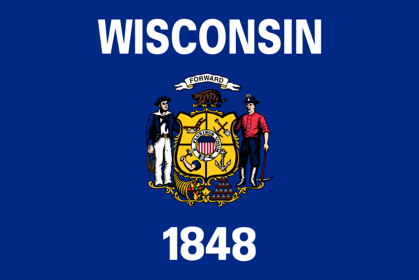J.P. Gairhan is a sophomore political science major in the Fulbright College of Arts and Sciences from Cabot, Arkansas. He is actively involved with the Associated Student Government, The Traveler, the Distinguished Lecture Committee, and Phi Delta Theta. Upon graduation he hopes to enroll in Officer Candidate School and serve in the U.S. military.
From the outset of the 2016 election, Wisconsin did not seem as though it would be competitive. The Badger State has not gone Republican in a presidential election since George H.W. Bush won in 1988. This may seem like an oddity because Wisconsin holds a proud and notable conservative presence today. The highest-ranked Republican in the U.S. government, Speaker of the House Paul Ryan, is the current representative for Wisconsin’s 1st congressional district. The Governor, Scott Walker, initially was a candidate for president early in the election cycle but dropped out before August of 2015. Walker is famous for having survived a recall election in 2012 and for winning competitive races for the governorship in 2010 and 2014. He still carried a vocal and significant voice throughout the primary, most likely swaying the Wisconsin Republican primary to Senator Ted Cruz, and not Donald Trump.
Even with GOP stars, Wisconsin has voted Democrat nationally for well over twenty years. The largest city in the state, Milwaukee, is a major base of minority voters in an otherwise mostly white state. Madison, Wisconsin, the state capital, is also a major base for the Democratic Party These dense pockets of liberal voters has been carrying Wisconsin blue in presidential election cycles. Much like the rest of the United States, conservative voters are spread across the rural landscape of Wisconsin, and liberal voters are squished into the city. The suburbs of major cities are where the majority of independents can be found. This is true in Wisconsin as well.
Trump’s message throughout his campaign has been most appealing to non-college educated white voters. According to the most recent census data, Wisconsin’s population is roughly 87% white and the U.S. Department of Education has the state’s percentage of college graduates at 41.3% as of 2010. The message delivered by the Republican nominee focuses on the concept of “Making American Great Again” as an appeal to the America of the past. Wisconsin has traditionally been a hub of blue-collar jobs, usually filled by non-educated white people. The rustbelt as an economic entity has struggled immensely in the past decade as companies have been outsourcing their factories abroad, laying off American workers in the process. This creates what many would think a perfect environment for a Trump victory.
Prediction: Polling as of October 14 has Secretary Hillary Clinton up roughly six points in Wisconsin. The Marquette University Law School poll (an incredibly well-respected poll) has Trump down four points. The closest the race has been in the state was in late July and early August just following the conventions. From there, the race has tipped and is now considered leaning Democrat. An especially large shift has occurred after Mr. Trump’s comments about possibly sexually assaulting women was leaked via video by the Washington Post. Unless something drastic occurs, both Secretary Clinton and most likely Senator Feingold will win the state, and it’ll once again go blue.

